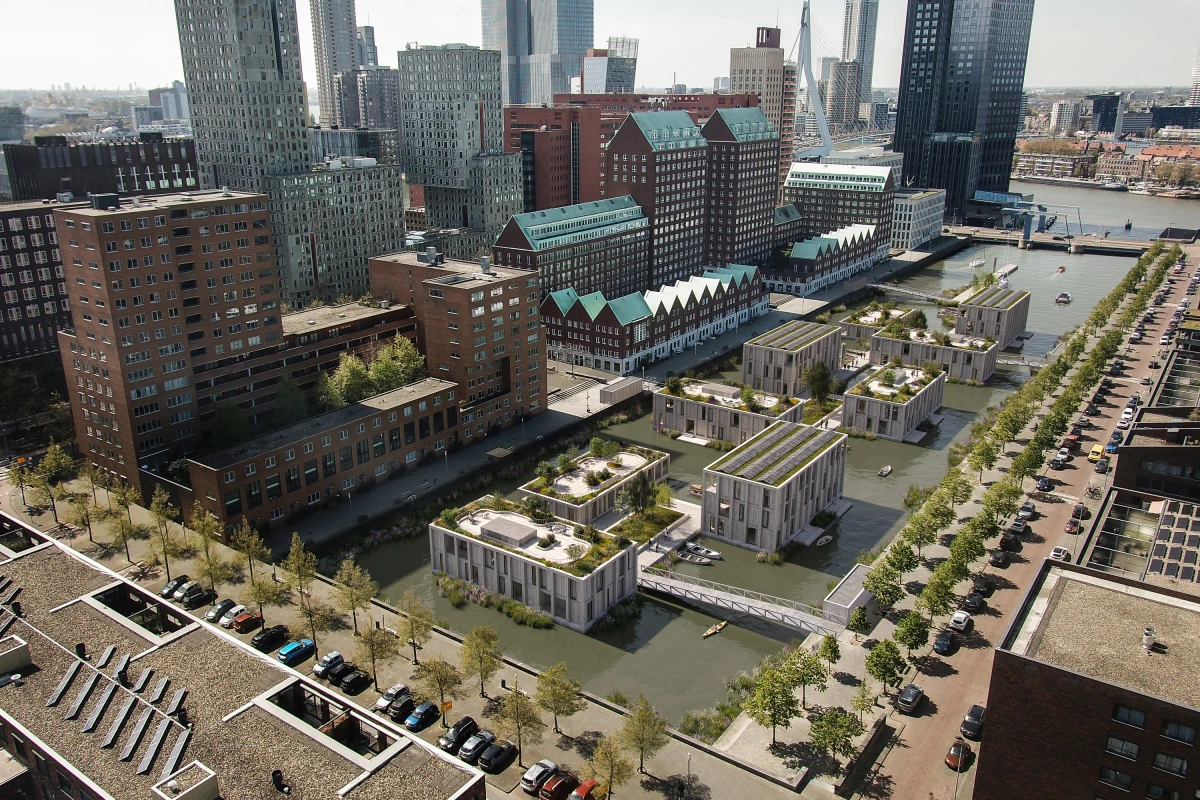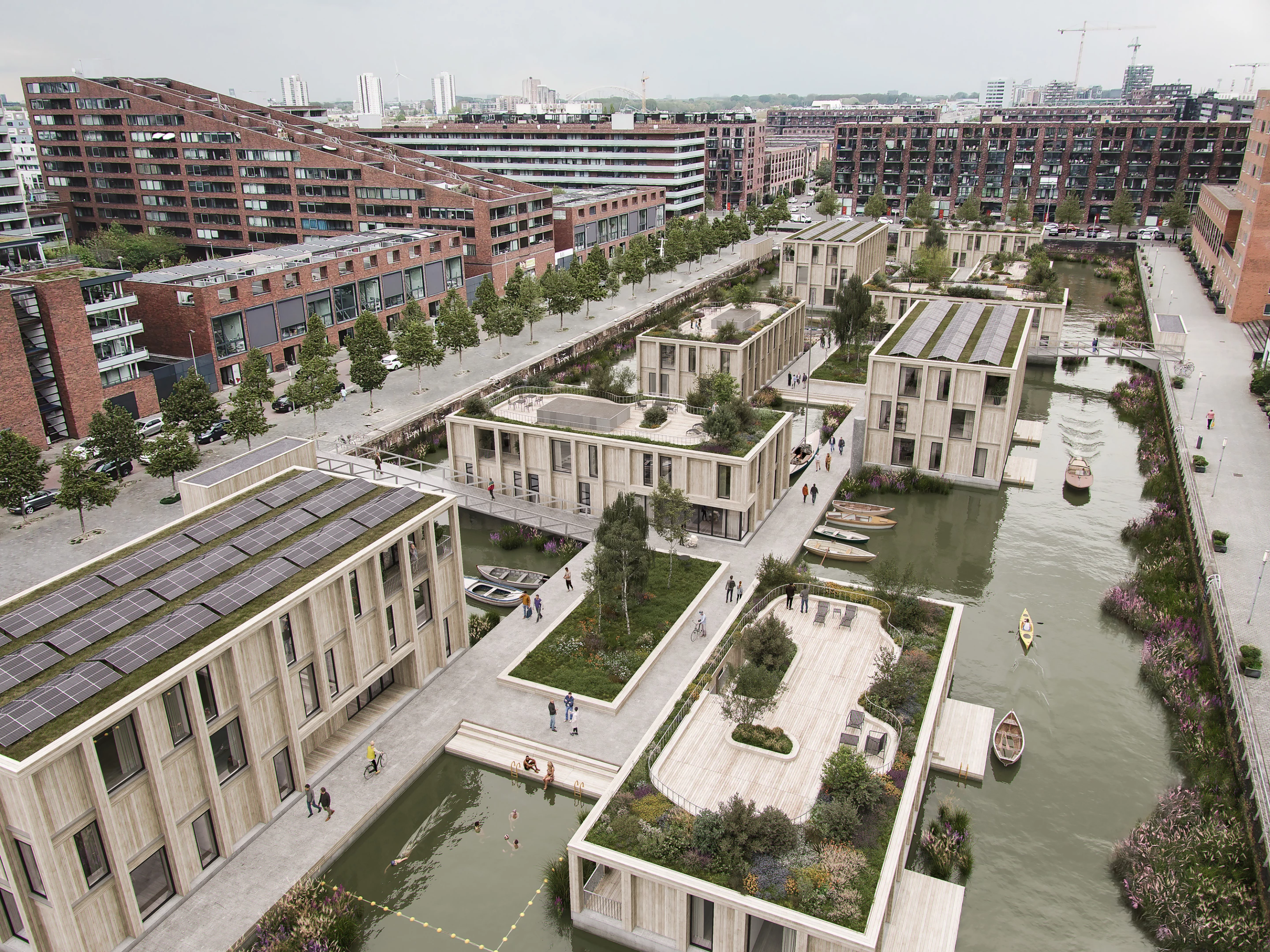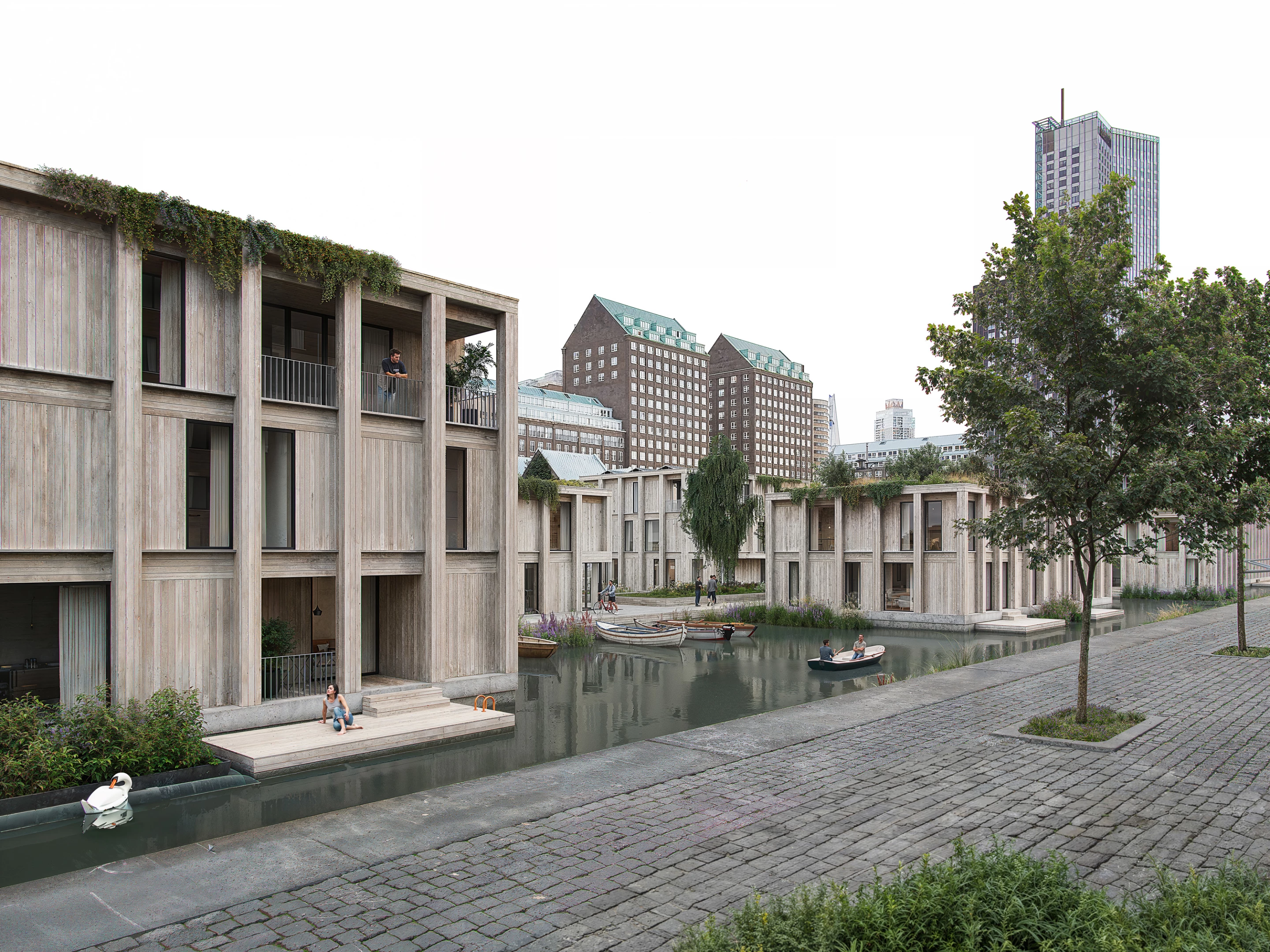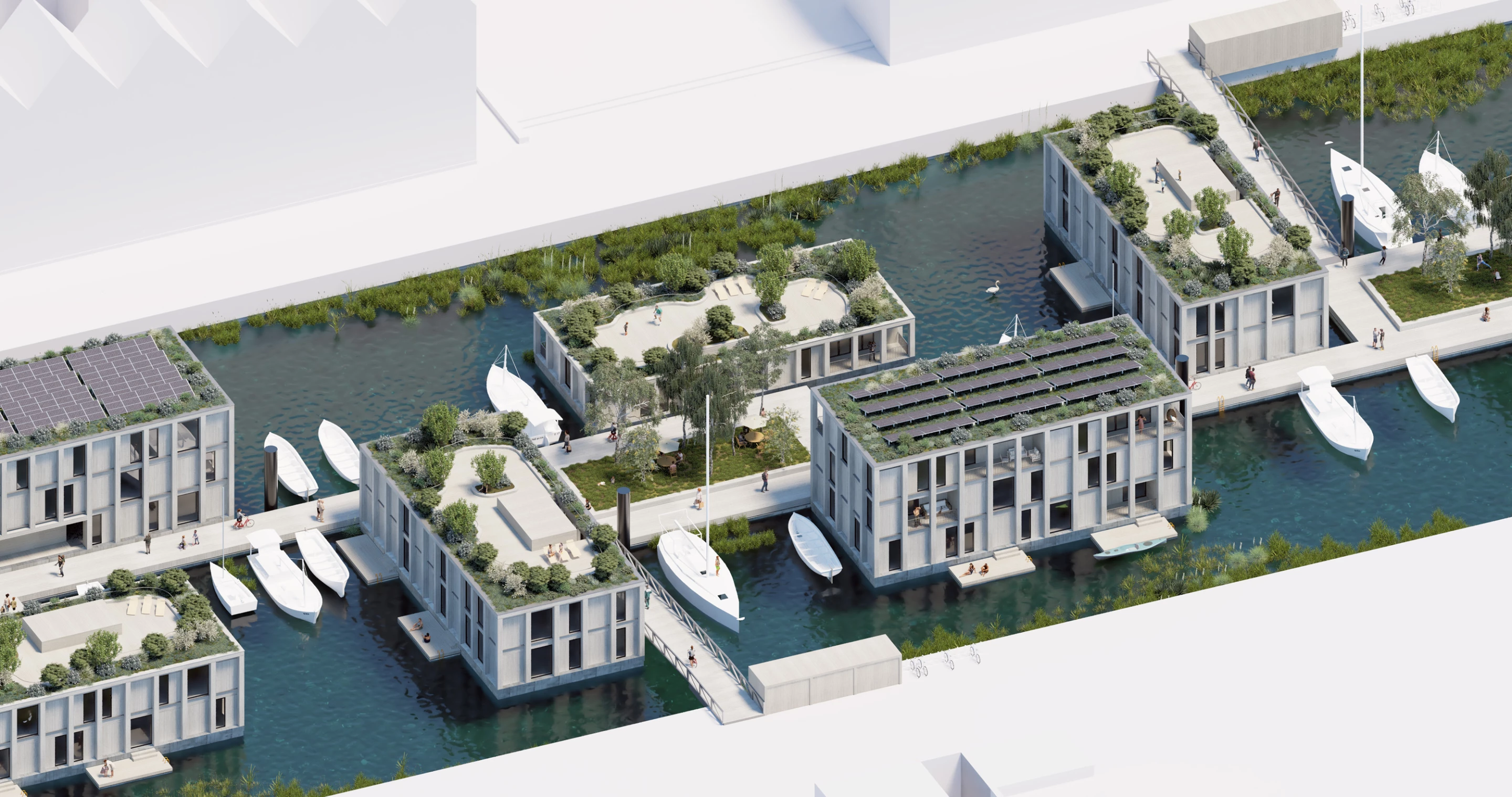With space at such a premium in many modern cities, this project tackles the need for more new housing in an interesting way. Named Spoorweghaven, it's envisioned for a disused dock in the Netherlands and, assuming it goes ahead as planned, will be the largest floating community in Europe.
Spoorweghaven is designed by both Denmark's MAST (Maritime Architecture Studio) and construction company BIK bouw. Assuming it goes ahead, it will be located in a dock of the same name, which is one of the oldest in Rotterdam and dates back to the late 19th century.
It's early days yet but we do know the new neighborhood will consist of 100 "low-cost" homes, along with commercial spaces and a recreational harbor. Additionally, there will be communal areas, roof terraces, floating gardens, and lots of greenery throughout.
The buildings will be constructed off-site from cross-laminated timber and installed on floating bases, before being towed into place and safely anchored. The idea is that they can even be moved elsewhere if required, such as at the end of a lease, for example.
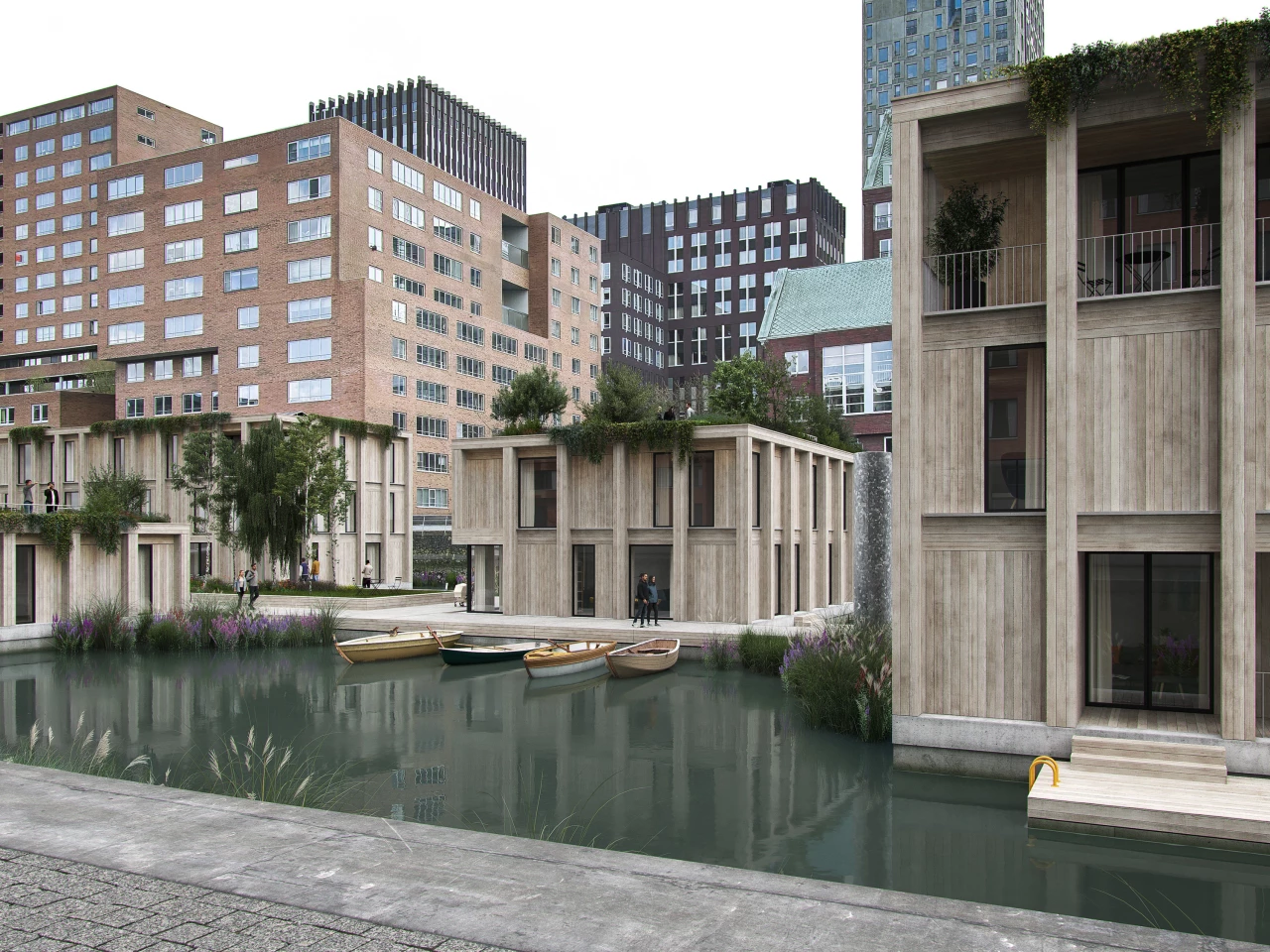
"The neighborhood will be fully accessible by bicycle and boat, integrating into Rotterdam's extensive cycling network while introducing new possibilities for waterborne transport," says MAST. "Bridges at either end of the harbor will reconnect the waterfront and provide access to public bicycle parking, floating walkways and green spaces. A continuous 'blue ribbon' of boat routes will weave through the site, allowing direct access from the city center to the new apartments."
Renders also show lots of solar panels, which will be used to help reduce the development's draw on the grid. Additionally, MAST has collaborated with Scottish ecological engineers Biomatrix for the installation of floating reed beds around the perimeter of the site, helping to filter the water, increase biodiversity and provide habitats for fish and other animals.
The project was conceived because the Netherlands faces a housing shortage and is struggling to fulfill plans to build a million houses by 2030, which MAST says is largely due to a lack of buildable land. This issue has seen other Northern European countries embrace both floating homes and land reclamation, like Copenhagen's Holmene. We've no word yet on when this one is expected to be completed.
Source: MAST
